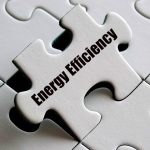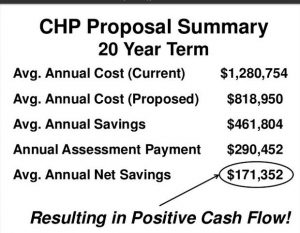“energy efficiency is the cheapest, quickest way to cut energy waste, which is good for the country. It saves consumers money, creates jobs, spurs economic growth, reduces harmful pollution and strengthens the electricity grid.” Kit Kennedy, NRDC
There’s no shortage of controversy when discussing the ideal source of energy generation. Solar, coal, oil, wind, geothermal, etc. – all have their supporters and detractors.
Conversely, it’s rare to find any disagreement when considering the merits of reducing wasted energy. Reducing the waste lowers the need to generate energy. While reducing wasted energy is a complex issue, and at times difficult to achieve, it has almost universal support and appeal.
 What makes reducing the waste of energy difficult is because it’s similar to assembling a complex jigsaw puzzle – you have to bring together many pieces to achieve the desired result.
What makes reducing the waste of energy difficult is because it’s similar to assembling a complex jigsaw puzzle – you have to bring together many pieces to achieve the desired result.
Here’s a short list of the pieces of the puzzle that must be brought together to maximize the reduction of wasted energy:
- How much energy is being wasted? – There must be an accurate understanding of where money is being lost due to energy inefficiencies. This usually requires an energy audit that establishes a benchmark value against which all outcomes will be measured. If the amount of energy wasted is unknown, inaction is the most frequent outcome.
- What does the big picture look like? – Imagine trying to put together a picture puzzle without the picture! Many energy efficiency projects are based solely on a projected return on investment (ROI). This leads to the piecemeal approach which leaves the big picture incomplete. Comprehensive projects must be considered in order to achieve the big picture of maximized energy savings.
- Is it affordable? – Lack of financing prevents most energy efficiency projects from even being considered. To overcome the barrier of financing there are many incentive programs to fund energy efficiency projects. An understanding all of the financing components including tax incentives, rebates, energy specific financing, deductions, etc., help energy projects launch in a cost effective manner.
- What are the deadlines – most energy incentives, rebates as well as tax credits have very specific deadlines after which they are no longer available. Understanding these deadlines is critical to maximizing return on investment.
- What are the hidden costs – When the choice of an energy technology upgrade is based solely on the cheapest technology, hidden costs often result. Understanding those hidden costs by comparing product lifespan, the cost of replacement, the frequency of replacements, etc. will minimize the regrets that often follow the discovery of hidden costs after a project is completed.
- Match the technology with the business – any energy technology upgrade has to match the specific needs of a business. The frequent one-size-fits-all solution can have a big downside.
- What’s the long term result? – a long term financial analysis provides the most accurate picture of energy efficiency savings. An analysis must factor in replacement costs, the rising cost of energy, the cost of maintenance, etc. to get a truly accurate picture. Projecting out to 20 years is not unreasonable when looking for true costs and the ultimate energy savings.
“Over the whole building stock the largest portion of carbon savings by 2030 is in retrofitting existing buildings and replacing energy-using equipment due to the slow turnover of the stock.” Mark Levin, et al.
The CEO of The Energy Alliance Group of Michigan was explaining the big picture of the energy efficiency puzzle to a group of business leaders last week in North Carolina. He noted that if a company qualifies for the energy financing program known as Property Assessed Clean Energy (PACE), they can wrap all the expenses of an energy efficient upgrade into one payment that will be repaid completely out of the resultant energy savings.
“The whole project, including the all the costs of the upgrade and financing, would result in a positive cash flow each month!” Scott Ringlein
When pressed by a listener to be more specific about what “resulted in positive cash flow” really meant, our CEO explained it with a specific example illustrated below. “The complete project yields a net improvement in cash flow from the current $1.2 million energy spend” (view presentation HERE). This outcome was possible without the company providing any of their own money to fund the project! The whole project, including the upgraded energy technology, labor, design and financing, would result in significantly less cash going out each month! In other words, it is cash flow positive.
While everyone agrees that reducing wasted energy makes sense, the process can be likened to putting together a big puzzle made up of many pieces that must come together in the right sequence and at the right time. If you’re considering taking on the energy efficiency puzzle a good first step is to download the special report – Ten Questions to Ask Before an Energy Efficiency Upgrade! The report details the important information that assures a successful reduction in wasted energy.
See also: PACE – A Paradigm Shift in Funding Energy Efficiency & Renewable Energy Projects


This article explains that it’s necessary to take a holistic approach to determine the best way to proceed regarding which energy-savings projects to implement. Plus the best way to save energy is not to spend it in the first place!